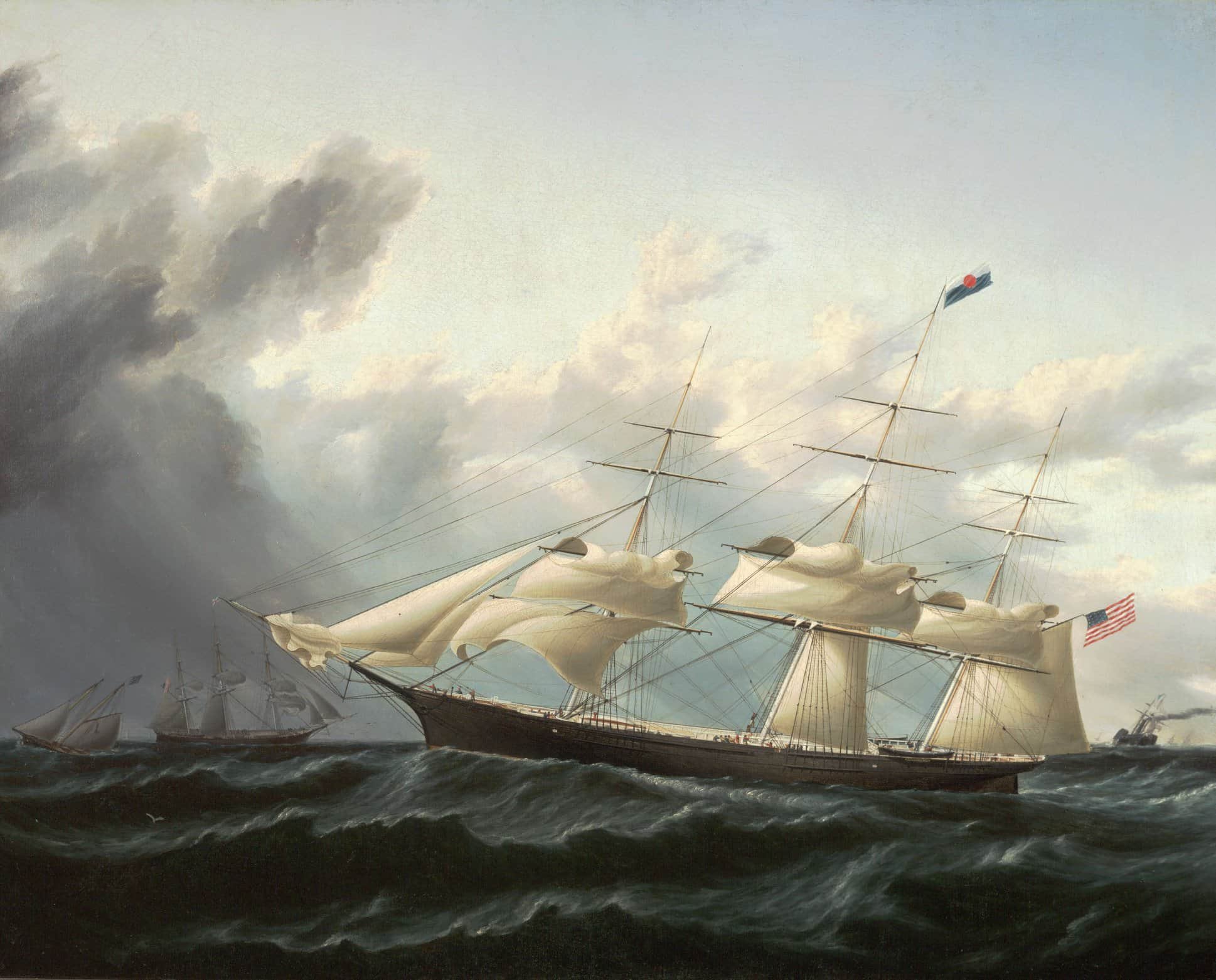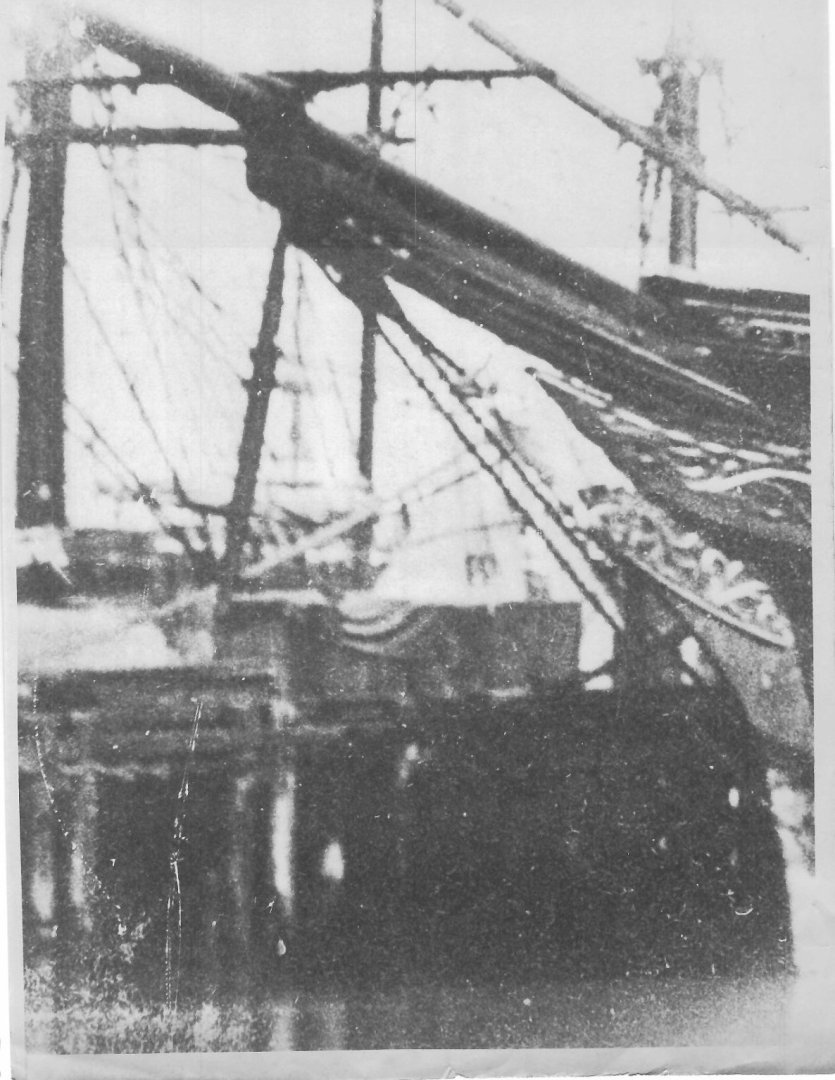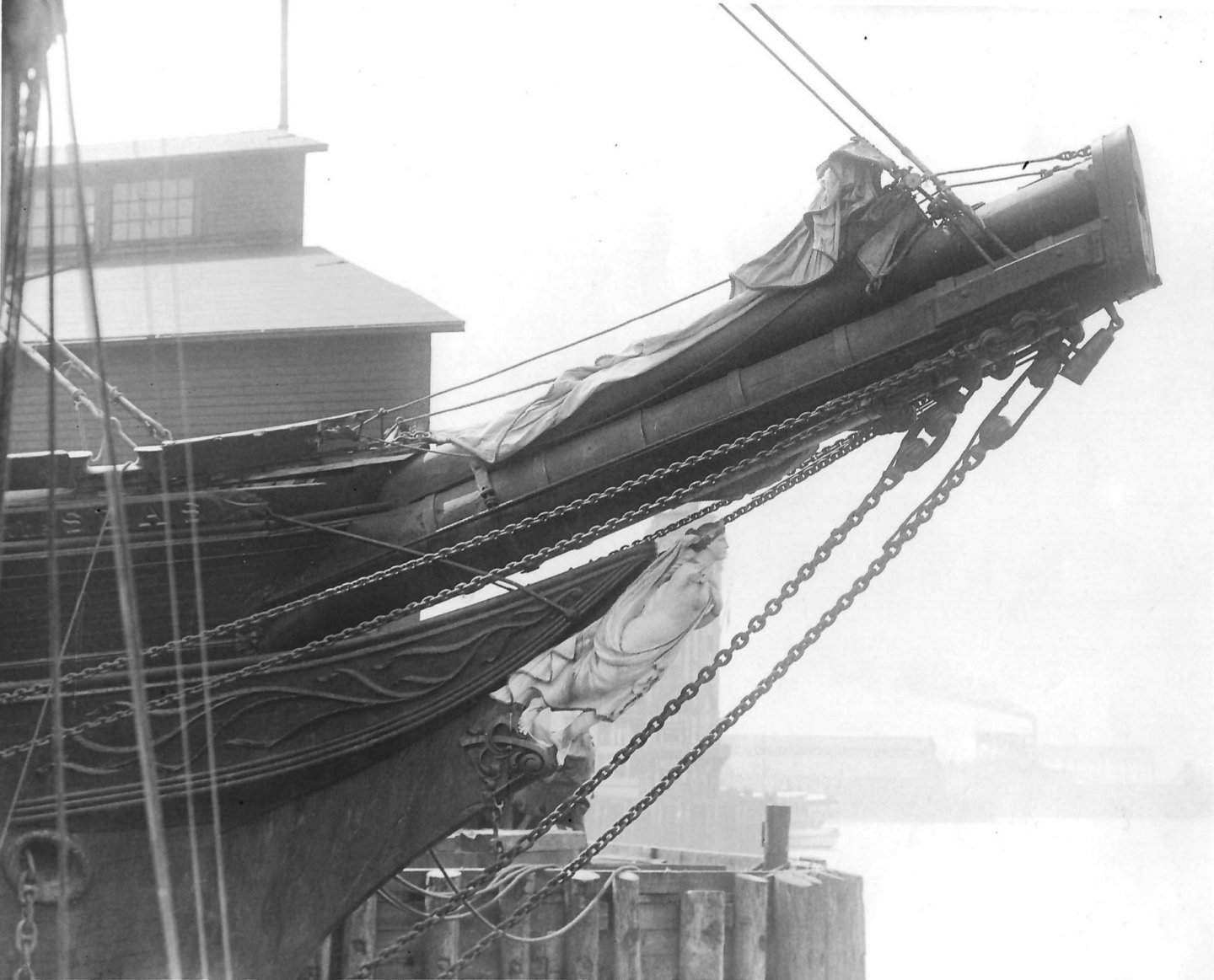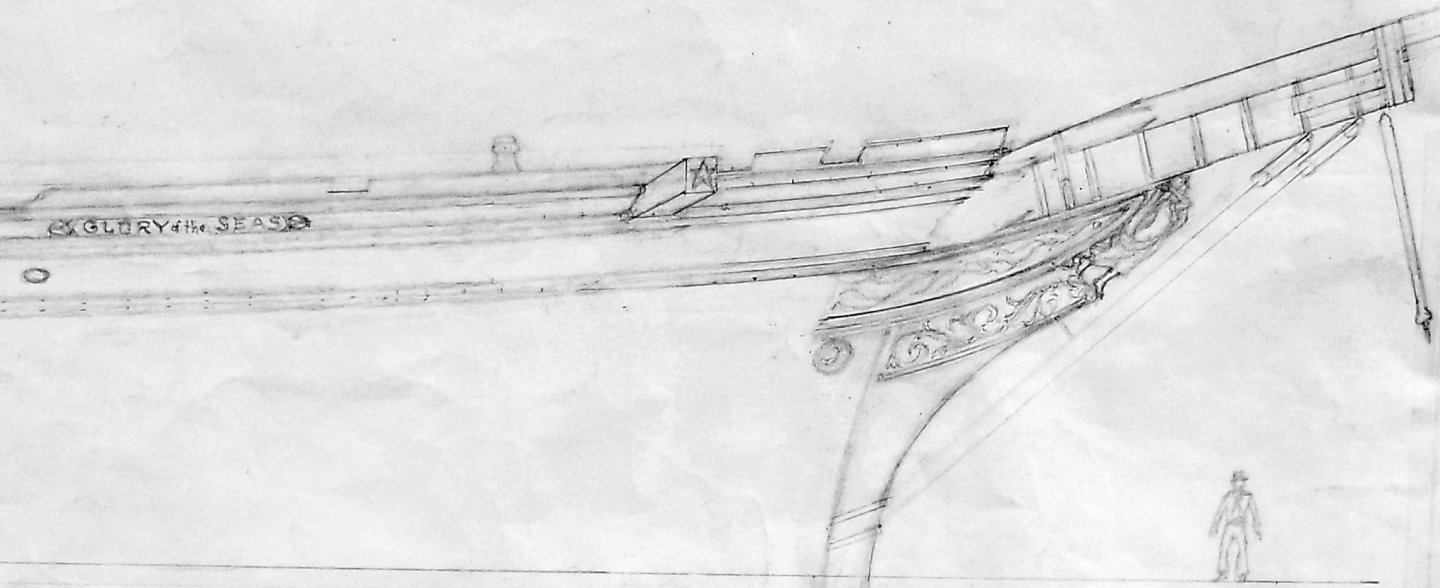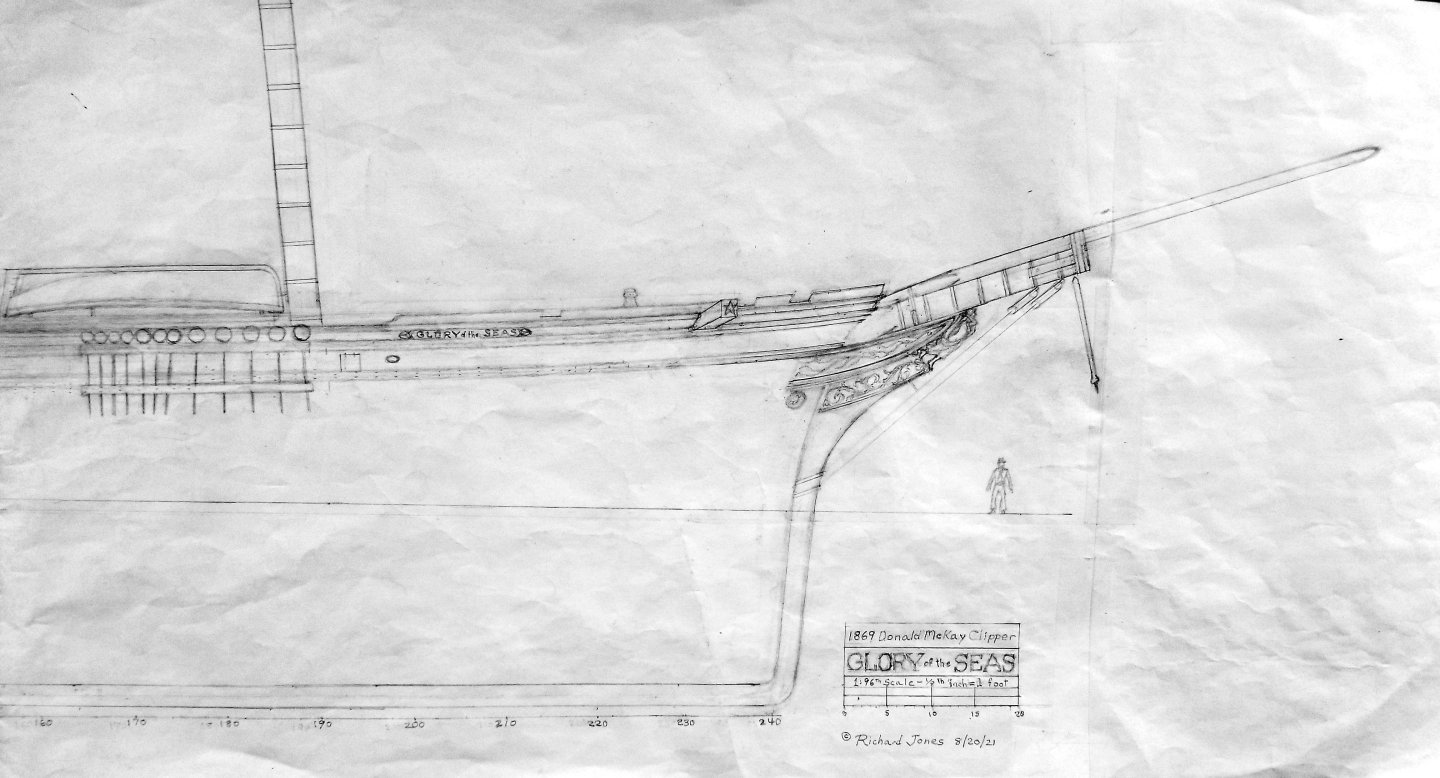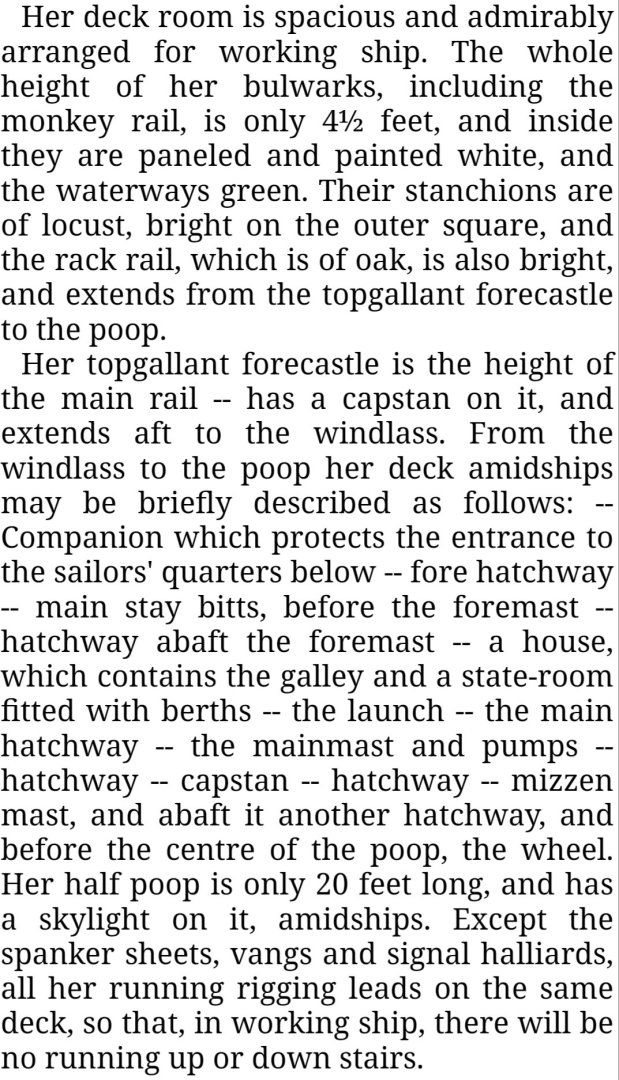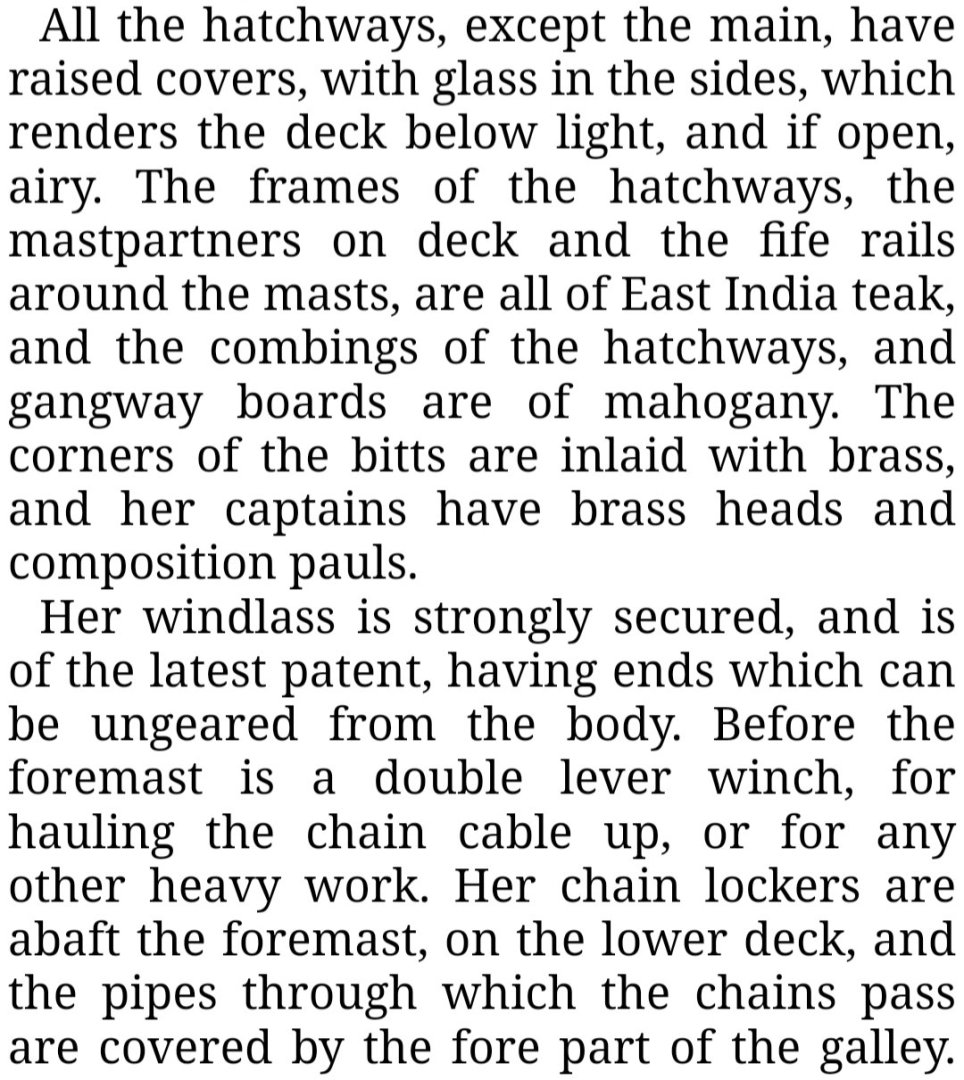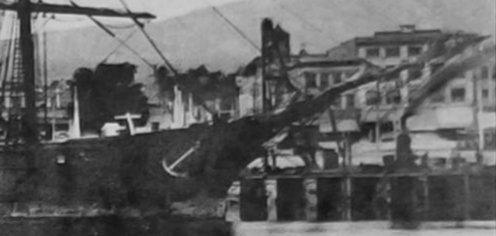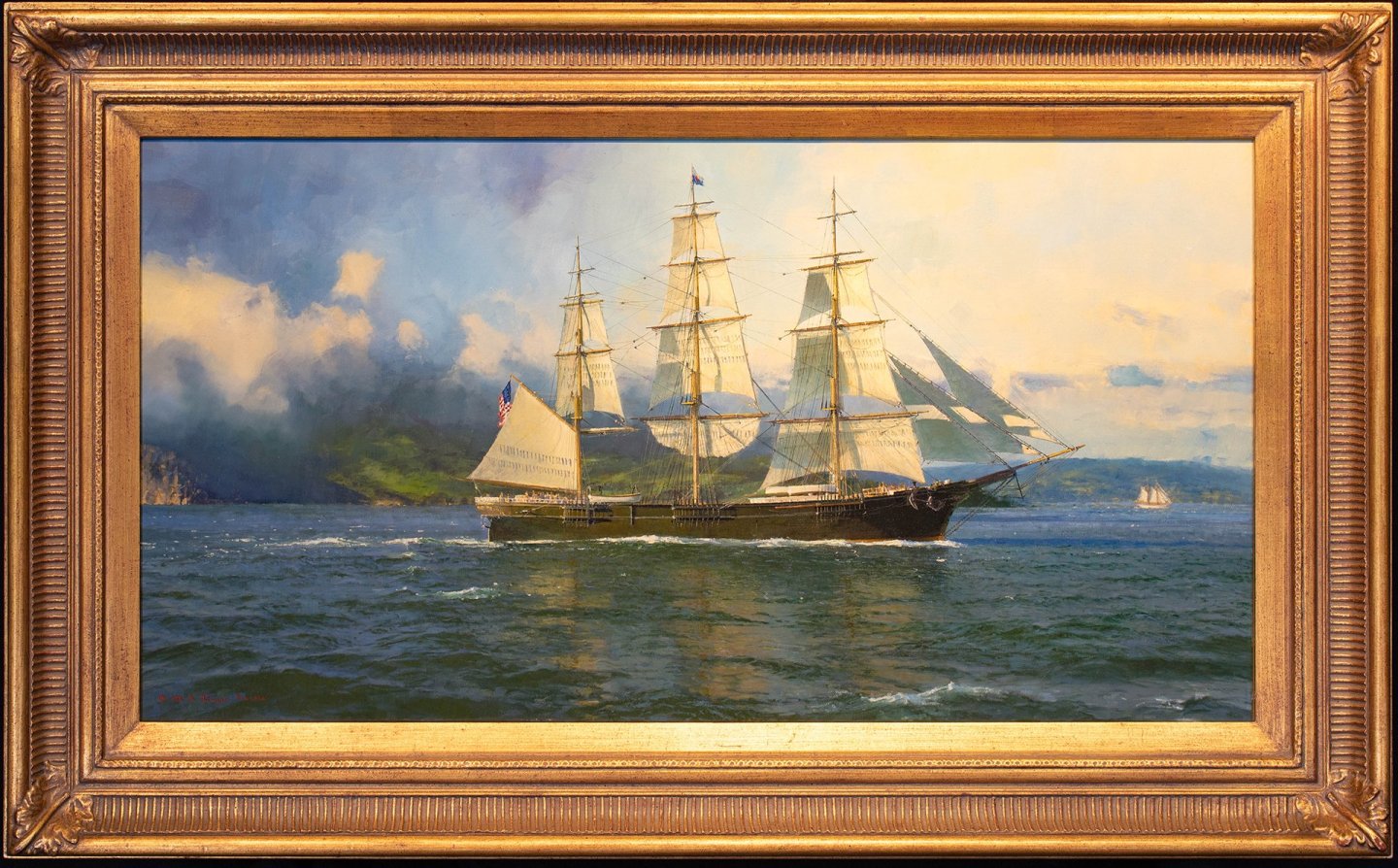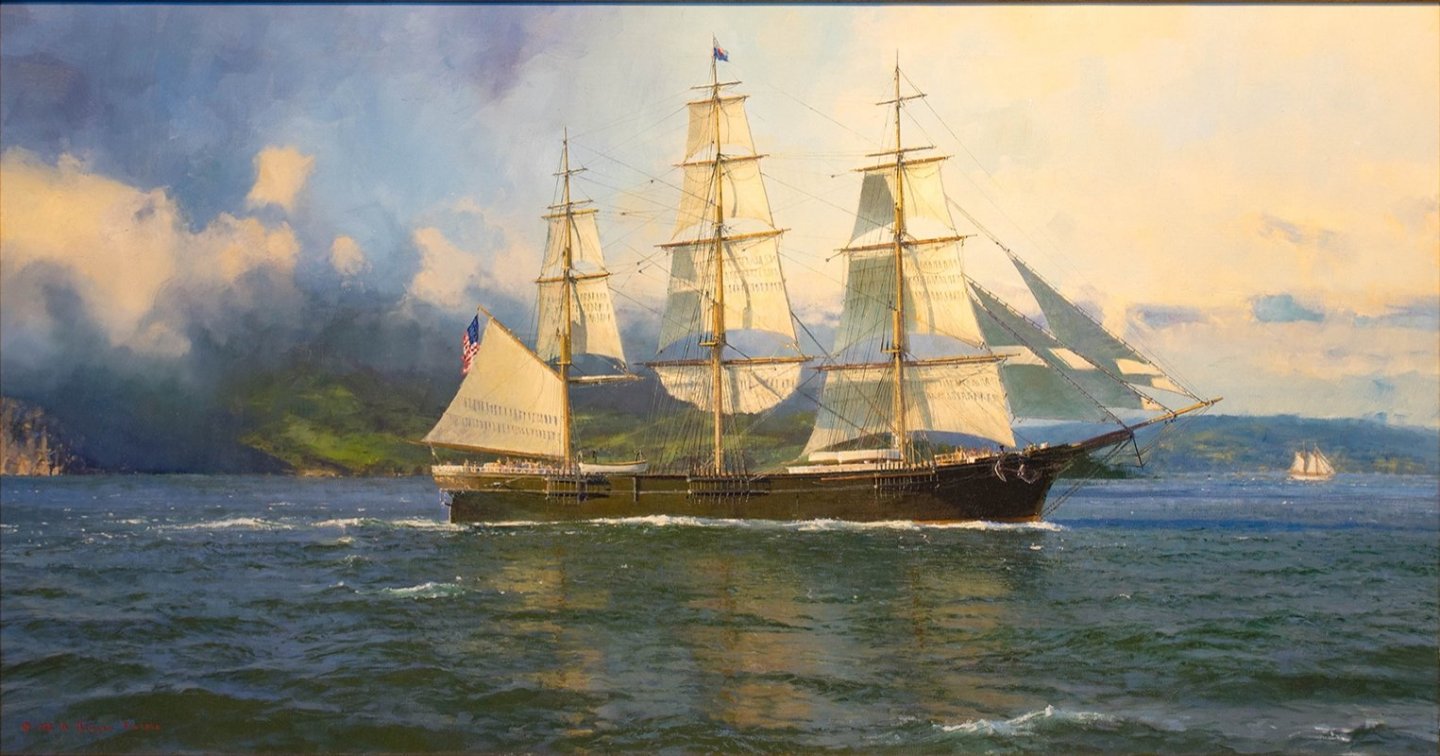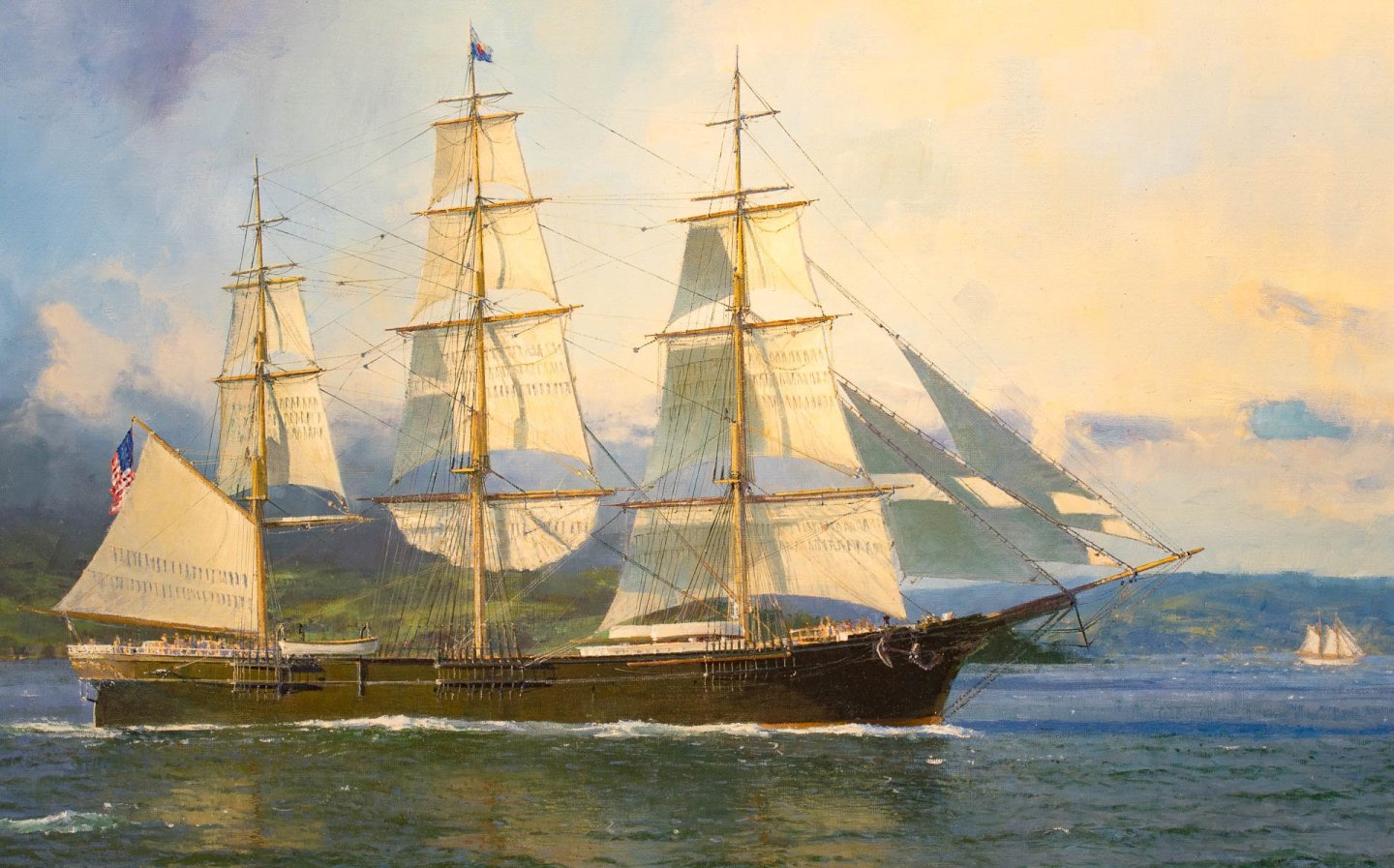-
Posts
2,168 -
Joined
-
Last visited
Content Type
Profiles
Forums
Gallery
Events
Everything posted by ClipperFan
-
@Jared as Rob said, it's not our intention to belittle efforts of anyone building this Model Shipways kit, which builds into a beautiful model. We're just trying to improve accuracy for anybody wanting to build this beautiful ship. It's just that as I see increasing inaccuracies, the more critical I become of plans as compared to the actual vessels themselves. Then again, in all fairness to Ben Lankford, I have no idea what resources he used to create his plans. It does appear more and more likely that he relied quite heavily on the layout of Cutty Sark then anything else. As I consistantly state, the single best resource for accuracy remains Duncan McLean's November 4th, 1851 Boston Daily Atlas article. He recites precise details obviously supplied to him by Donald McKay's shipyard itself. I encourage you to compare specs from this article to the commercially supplied plans. Where they differ, I would definitely rely on McLean's since they come directly from McKay himself. This is not to suggest you tear down anything you've already done but for future reference in what hasn't been constructed yet. http://www.bruzelius.info/Nautica/News/BDA/BDA(1851-11-04).html
- 431 replies
-
- Flying Fish
- Model Shipways
-
(and 2 more)
Tagged with:
-
Rob, I cannot exaggerate how appalled I am at the complete irresponsibility of these plan designers. It just handicaps modelers desiring to create beautiful replicas. I already see another exposé for Nautical Research Journal as an overview of all these inaccuracies in order to offer correctly accurate details.
- 431 replies
-
- Flying Fish
- Model Shipways
-
(and 2 more)
Tagged with:
-
@rwiederrich @Jared is doing an excellent job rigging his model. However, he's being hampered by inaccurate instructions, making his work more tough than it should be. He shared a section of his commercially produced bowsprit-jibboom plans for his Flying Fish model. Quite frankly, I am appalled at irresponsibility of designers to saddle would-be ship modelers with such badly illustrated spars! When compared to actual ships, this is just so misguided! To be fair, this is no critique of Jared or any other person constructing a Flying Fish model. They're carefully following instructions. Which are dead wrong! There is no lower tapering of the bowsprit, it remains consistent in diameter. Just before it enters the bow, it squares out to prevent any chance of rotation. The jibboom also remains consistent in diameter until the very tip, as seen in these scenes of Glory of the Seas docked at San Francisco. Then there's an image of the bowsprit in 1869 while she's on the ways. Another of her prow in 1913. It does narrow but from the top down and it too becomes rectangular as it enters the monkey rail at the bow. Finally, I've included my scale accurate bow sketch to show how these spars really appeared. I hope this helps anyone building this kit recognize a stark difference between reality and just poorly conceived and drawn plans. There's nautical logic to each design and build of every aspect of these magnificent clipper ships which just seems to escape designers of these poorly executed plans. Crafting your models after the truth will result in more realistic and durable replicas.
- 431 replies
-
- Flying Fish
- Model Shipways
-
(and 2 more)
Tagged with:
-
@Jared advanced copies of my lengthy artice were sent to @rwiederrich Michael Mjelde and @Vladimir_Wairoa as a courtesy and to elicit any feedback they offered. The only correction recommendations came from Michael and had to do with revising a few references. I can say without exaggeration that this article is the most in-depth recitation of Rob's systematic, piece by piece rigging process including scratch building masts, yardarms, pre-rigging sub-builds off the ship and even inventive creation of the most authentic tightly furled sails I've ever seen on a model ship. I just can't say when the article will be published. A third installment, devoted to Vladimir's patient, perfectionist build is in process to meet a January 1st 2025 submission deadline.
- 431 replies
-
- Flying Fish
- Model Shipways
-
(and 2 more)
Tagged with:
-
@Jared My best recommendation for an excellent how-to rigging resource from a nearly 50 year veteran of museum quality replicas is to review @rwiederrich build logs for his Great Republic and Glory of the Seas builds. My entire 2nd Nautical Research Journal submission covers Rob's highly systematic, eloquently creative and consistently thorough rigging process of his Glory of the Seas miniature. His results can be seen both on Model Ship World and Ships of Scale. Ed Tosti's Young America build is second to none. Rob on the other hand is more relatable to the everyman modeler. Good luck!
- 431 replies
-
- Flying Fish
- Model Shipways
-
(and 2 more)
Tagged with:
-
@Jared Rigging is probably the most tedious, challenging and time consuming step in creating a beautiful sailing ship model. Yet, a well done rigging job is what I believe separates a museum quality replica from an ordinary one. I'm sure Rob would echo that sentiment too.
- 431 replies
-
- Flying Fish
- Model Shipways
-
(and 2 more)
Tagged with:
-
Rob, Just do your thing at your own pace. Whatever level of completion you achieve is whatever it is. I meant no pressure to push you, only my enthusiasm for the coincidence that our project just somehow happens to coincide with the Anniversary of the launch of a spectacular career for a man who now remains largely forgotten.
-
Snug Harbor Johnny, That's a very insightful revelation. Unfortunately, it appears like Donald McKay's fortunes had decidely turned sour almost from the moment he had launched Glory of the Seas. By the time she arrived in San Francisco in 1870, McKay's shipyard was already in Bankruptcy, she was siezed to turn her over to her creditors.
- 345 replies
-
- Flying Fish
- Model Shipways
-
(and 1 more)
Tagged with:
-
@Rick310 Wow, just wow! Please share that editorial with us. I've always admired the beautifully illustrated Chapelle plans but had no point of reference to compare his layouts to. As a result of years of concentrated research into recreating a historically accurate Glory of the Seas Rob and I have developed keen insights into the descriptions of these ships. The first time I corresponded with author Michael Mjelde I was concerned about insulting his work. He couldn't have been nicer or more encouraging about our efforts. Years later I learned he began his dedicated research into McKay's splendid clipper decades ago. Yet he was genuinely humble enough to recognize and admit that he had made errors in his plans of the ship. He then generously shared documents and historic images to help us in our exhaustive investigation. It now appears he is the exact opposite of the apparent example Chapelle demonstrated. When we began our research we all agreed that our "North Star" would be devotion to facts as best we could develop them. More than once, we had to revise our plans as more accurate information was revealed. But we always remained true to that conviction. I feel the same way about researching accurate layouts of any ship, regardless if it's a McKay vessel (my favorites) or others like Nightingale or Challenge. The facts are there, we just need to have the patience to read them and follow them intelligently. That and be fully willing to admit when a mistake was made and implement corrections as they're warranted.
- 345 replies
-
- Flying Fish
- Model Shipways
-
(and 1 more)
Tagged with:
-
Rob, The point I was making was that Donald McKay, pre-eminent designer of inspirational record breaking clipper ships was impoverished in his later years. Tragically, his destitution was so severe that he couldn't even afford to secure decent firewood to heat his home. As a result, he couldn't even spare destruction of dozens of the finest now priceless heirloom builder's ship models ever created. What an immeasurable loss to posterity.
- 345 replies
-
- Flying Fish
- Model Shipways
-
(and 1 more)
Tagged with:
-
@Snug Harbor Johnny and @rwiederrich the sad reality was that Donald McKay stubbornly persisted in his devotion to sail alone. Why that was is a bit of a mystery. The big tragedy was that in the end when he was cold, Donald McKay resorted to cutting up and using his precious, one-of-a-kind builder 's models of all of his ships as firewood.... That must have been heartbreaking.
- 345 replies
-
- Flying Fish
- Model Shipways
-
(and 1 more)
Tagged with:
-
@rwiederrich at first, I thought the only omission was the unique McKay bow treatment, now as we get more in-depth into studying actual descriptions of these vessels, I am stunned how casually inaccurate commercial plans are in comparison to the real ships themselves. Just using plain common sense shreds a lot of these blatant inaccuracies. Now the question is this: how willing would producers of these plans and modeling kits be to revising them to reflect these many discoveries???
- 345 replies
-
- Flying Fish
- Model Shipways
-
(and 1 more)
Tagged with:
-
Rob, It's a shame too because Chapelle did some beautiful illustrations. It makes me wonder if Howard ever had a chance to read the Boston Daily Atlas article? With such easy availability to all of these highly detailed articles through the internet, it's a challenge to see if these were tougher to locate and read in the 60s. If they were located, they unfortunately weren't given much credence. Ben Lankford definitely referenced the Boston Atlas article more than once, yet he apparently missed the entire passage referring to Flying Fish having twin companions in the wings of the topgallant forecastle leading to crew accommodations below. Now it appears the same mistake was possibly first initiated on the Chapelle Challenge. The more I carefully read context and visualize actual descriptions of these masterful vessels, the more I'm surprised to discover how inaccurate current plans and models are as compared to what I've read! Honestly, it never ceases to amaze me how cavalier treatment of deck arrangements on clipper ships were in comparison to modeling historic military vehicles. Can you just imagine the reaction if someone put twin tails on a B-17 Flying Fortress? Yet I have a 1930s book on how to build a model of the Sovereign of the Seas which gives modelers multiple figurehead options, including a female mermaid and a fiddlehead but none of which includes her original merman one actually installed!
- 345 replies
-
- Flying Fish
- Model Shipways
-
(and 1 more)
Tagged with:
-
@rwiederrich my intent for sharing Duncan McLean's article has nothing to do with McKay's now proven uniquely genious navel hood, cutwater bow design. When I read @Rick310 describe the Challenge forecastle to support the open forecastle design, I found the McLean write-up on her. I had no idea what I would find. In my first read of this large, 3 decker NY, Webb design I quickly learned that, similar to Stag Hound, Flying Cloud and Flying Fish her topgallant forecastle height was at the main rail. Stag Hound and Flying Cloud both had their main rail height at 5' while Flying Fish was 4 & 1/2'. Webb's extreme clipper Challenge had a bulkhead height of 4 & 1/2' including her monkey rail. That means her forecastle height had to be at least a foot lower. All four vessels had crew accommodations in their forecastle bows. We've concluded in the case of all 3 McKay clippers that the crew quarters were 3' below. So then the aft forecastle bulkhead had to be enclosed to provide a safe environment for sailors. Now, the exact same description applies to the Webb clipper as well. Again, the model is inaccurate as compared to the McLean description. Even her light blue waterways do not match the green color described in the article. There's no mention of where water closets were located so they could just as easily have been located below, along with her windlass. It's looks more and more like Chapelle relied on the Cutty Sark deck layout and just disregarded the McLean write up. Here's the sections which cover this area.
- 345 replies
-
- Flying Fish
- Model Shipways
-
(and 1 more)
Tagged with:
-
@Rick310 again, I wonder how much credance Chapelle and Lankford placed on Duncan McLean's words. Lars Bruzelius has a complete transcript of June 16th, 1851 Boston Daily Atlas write-up of the new Webb extreme clipper Challenge. Her bulwarks including monkey rail were a mere 4 & 1/2 feet. Meanwhile, the height of her topgallant forecastle was at the main rail. That means the forecastle deck had to be lower than that. Most McKay monkey rails were 16-18 inches but, even if the monkey rail on Challenge was only 1 foot, that puts the height around 3 & 1/2 feet. The forecastle had a capstan on it and extended to the windlass. Abaft the windlass is a companion to the sailor's quarters. No surprise, just like Flying Fish, crew quarters in the forecastle are below. Since height of the Challenge two lower decks was 7 feet 8 inches, I suspect a drop to her sailor's quarters was 4 feet below the forecastle, resulting in accommodations of around 7 feet 6 inches. This tells me that much like Flying Fish was described, Challenge also had a fully enclosed aft forecastle bulkhead. In addition, forecastle of Challenge was equipped with 4 plate glass air ports and was otherwise well lighted and ventilated. Her windlass was described as being strongly secured, of the latest patent, with ends which could be ungeared from the body. This description sounds exactly like that equipped on Stag Hound launched six months earlier. Rob and I concluded it's a perfect match to Emerson-Walker's patented windlass. Before the foremast is a double lever winch, for hauling the chain cable up, or for any other heavy work. Question: up from where? Could it be that, similar to Stag Hound the windlass on Challenge was also secured below? Her chain lockers are abaft her foremast, on the lower deck, and the pipes through which the chains pass are covered by the fore part of the galley. I haven't had a chance to see the Challenge model you shared here or to read Chapelle's description. I'd love to see more of this model. Meanwhile, here's a link to the entire Duncan McLean article: http://www.bruzelius.info/Nautica/News/BDA/BDA(1851-06-16).html
- 345 replies
-
- Flying Fish
- Model Shipways
-
(and 1 more)
Tagged with:
-
@rwiederrich @Vladimir_Wairoa that's exciting news. I am so jazzed to see Rob start his "warp-speed" build. Meanwhile, even if you're not planning an immediate build, Vlad did you make a 1:72nd scale set for yourself? Rob, I hope the 2nd set is for me. I'm ready to contribute my fair share to get a copy. Just let me know who I owe what. Knowing that next year (just a few months away now) is the 175th Anniversary of the launch of Stag Hound, I can't think of a better tribute than to see her realized by Rob. Even if he just gets her hull completed. I just love the way Donald's son Cornelius McKay phrased it "The Pioneer craft of the California Clipper Fleet." Her successful career, although sadly way too brief, did indeed lead to a fleet of some of the most spectacular, record breaking clippers the world has ever seen.
-
@Rick310 thanks for sharing this Sept 1980 # 3 Nautical Research Journal article. If this is the full reference to her deck layout a surprising omission sticks out to me like a flashing neon light. There's no mention at all of the clear description of the forward forecastle doubling as accommodation for the crew below. If there was, it's not covered in the pages shared here. Since Ben Lankford refers to the Boston Daily Atlas more than once, it seems like he just missed this critical description of the Flying Fish prow: "She has a topgallant forecastle the height of the main rail [4 & 1/2 feet], and in the wings are companions, which lead to the sailor's quarters below; and before [not aft] the companions are water closets [two not one], and along the sides, lockers, etc. The accommodations for the crew [below] occupy the angle of the bow, are lofty, well lighted, and ventilated." Italics added by me for emphasis as are words in brackets. How Ben Lankford misinterpreted this section escapes me. But current plans for Flying Fish are completely at odds with Duncan McLean's description. Here again is my logic for a completely alternative interpretation based upon McLean's words, the context of his phrases and some common sense. First, Flying Fish had the lowest topgallant forecastle height of any of McKay's thirty odd clipper ships. 4 & 1/2 feet is the upper deck height of her forecastle. Decks were 3 & 1/2 inches thick, meaning the forecastle deck height underneath would have been 4 feet, 2 & 1/2 inches. Question: how does this height compute with McLean's description of "lofty, well lighted and ventilated" crew's quarters? Consider too, all other accommodations have heights of roughly 7 feet. So why stuff a windlass and crew's quarters into an area which is practically a crawl space? McLean specifically notes that "in the wings are companions, which led to the sailor's quarters below". That implies ladders leading down to a space 3 feet below, creating a similar ceiling 7 feet tall. Now twin water closets down below being before the companions makes sense along with lockers, etc. for use of sailors down below. To provide for this space suggests that the aft forecastle bulkhead must have been enclosed, not open as current Flying Fish plans call for. Second, where do you fit the windlass? Wouldn't the most sensible arrangement be to mount it below too? This gives far better working space crew as well. Third, to make accommodations lofty, well lighted and ventilated means most likely the aft forecastle bulkhead had some windows as well as some sort of ventilation. This alternative arrangement fits the Boston Daily Atlas description precisely and has the added benefit of leaving a much cleaner working space between the foremast and the topgallant forecastle.
- 345 replies
-
- Flying Fish
- Model Shipways
-
(and 1 more)
Tagged with:
-
@Rick310 that interesting location detail isn't mentioned in the brief write ups I read. It did say she was still in service 46 years later. She somehow managed to evade ravages of Southern Civil War Privateers and her career brought her into the 1900s. The Ogilvy piece, which I have yet to locate online, is more useful for modeling details but the Fitz Henry Lane work is just gorgeous.
- 345 replies
-
- Flying Fish
- Model Shipways
-
(and 1 more)
Tagged with:
-
@Rick310 @rwiederrich we began our revolutionary investigation into the authentic appearance for Glory of the Seas 4 years ago. We didn't realize how critical navel hoods and cutwater components were to the unique McKay bow until months into our evaluation. If you look at the 1913 starboard bow pic of Glory of the Seas which has been shared previously, you'll note that the splash rail is cracked and damaged. Most of the lovely carved overlay on her cutwater is missing as well. This damage was most likely a result of her being struck by a steamship as she backed into her. Such rugged construction was noted by Duncan McLean in his evaluation of McKay's 2nd California Clipper Flying Cloud. He basically said her prow was virtually indestructible. These navel hood components are integral extensions of her prow and provided superior support to her bowsprit, figurehead and cutwater beneath. Rob and I are now doing our level best to share our discoveries with the greater modeling community so that the true beauty of McKay's genius can finally be realized. In fact, a portion of my 2nd Nautical Research Journal article now submitted covers this surprising discovery.
- 345 replies
-
- Flying Fish
- Model Shipways
-
(and 1 more)
Tagged with:
-
@rwiederrich @Rick310 FYI: 1854 clipper Golden Rule, Wm. Hitchcock & Co, Damariscotta, Maine was 185' long, beam 37', 23' depth of hold, 1,185 tons. In comparison 1851 California Clipper Flying Fish had a keel 202', length on deck between perpendiculars 210', overall length knightheads to taffrail 220', beam 40', 1,556 tons. Her keel was 17' longer, length on deck 25' more and overall length 35' longer, beam was 3' wider and she was 371 tons larger.
- 345 replies
-
- Flying Fish
- Model Shipways
-
(and 1 more)
Tagged with:
-
@Rick310 To give you an idea how challenging it would have been for JE Buttersworth and other contemporary artists to accurately capture a McKay clipper bow, I've attached a detail fore photo for Glory of the Seas docked at San Pedro, Calif in 1907. There's very little visible of the existing naval hoods or separate cutwater underneath. The only way to tell is to get a larger, more detailed image. We have others which show them. I wanted to give you an idea of how her aggressive prow looked even when individual details aren't clear.
- 345 replies
-
- Flying Fish
- Model Shipways
-
(and 1 more)
Tagged with:
-
@Rick310 You may be right. There's just a slight chance that Simeon Jones did command the clipper Flying Fish. I read that Captain Nickels commanded her on all but one outward voyage. There's not much available on El Bueno Suceso which is what she was renamed after being repaired in 1858. So maybe Captain Jones commanded her on that sole outward voyage or after she was repaired? More than one Real Estate listing refers to him commanding the clipper Flying Fish but the list from Barnstable does mention that it could have been another merchant vessel.
- 345 replies
-
- Flying Fish
- Model Shipways
-
(and 1 more)
Tagged with:
-
@Rick310 Late artist David Thimgan created one of the most beautiful paintings of Donald McKay's 4th extreme clipper and 3rd of the California Clipper Fleet. 1998 "The Clipper Flying Fish in San Francisco Bay" commemorates her first place finish in the Great Deep Water Derby of 1852-53. I've included a link to the 1st Dibs ad, which includes a description of the event. https://www.1stdibs.com/art/paintings/david-thimgan-clipper-flying-fish-san-francisco-bay/id-a_10984292/
- 345 replies
-
- Flying Fish
- Model Shipways
-
(and 1 more)
Tagged with:
-
@Rick310 It's occurred to me that I never answered your question about the original Flying Fish stanchion location. Both the JE Buttersworth and Chinese import painting are consistent in showing a partial metal rail only at the coach house fore. That means the surviving rails would have had to be the ones that surrounded her poop deck bulkhead. Their exact height is a bit deceptive. Since stanchions are inserted between upper and lower horizontal rails, they appear to be taller. There's plaques on the mansion, confirming "Longacre" being on the National Historic Register and authenticating ownership of the home by Simeon Jones, Capt: Flying Fish. About the only way I can conclude that these uniquely different stanchions came off the ship herself would have to that they were removed, possibly during a refit of some sort, before she sank.
- 345 replies
-
- Flying Fish
- Model Shipways
-
(and 1 more)
Tagged with:
About us
Modelshipworld - Advancing Ship Modeling through Research
SSL Secured
Your security is important for us so this Website is SSL-Secured
NRG Mailing Address
Nautical Research Guild
237 South Lincoln Street
Westmont IL, 60559-1917
Model Ship World ® and the MSW logo are Registered Trademarks, and belong to the Nautical Research Guild (United States Patent and Trademark Office: No. 6,929,264 & No. 6,929,274, registered Dec. 20, 2022)
Helpful Links
About the NRG
If you enjoy building ship models that are historically accurate as well as beautiful, then The Nautical Research Guild (NRG) is just right for you.
The Guild is a non-profit educational organization whose mission is to “Advance Ship Modeling Through Research”. We provide support to our members in their efforts to raise the quality of their model ships.
The Nautical Research Guild has published our world-renowned quarterly magazine, The Nautical Research Journal, since 1955. The pages of the Journal are full of articles by accomplished ship modelers who show you how they create those exquisite details on their models, and by maritime historians who show you the correct details to build. The Journal is available in both print and digital editions. Go to the NRG web site (www.thenrg.org) to download a complimentary digital copy of the Journal. The NRG also publishes plan sets, books and compilations of back issues of the Journal and the former Ships in Scale and Model Ship Builder magazines.

